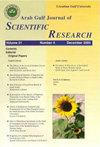严重的“无车恐惧症”预示着驾车者的道路安全状况不佳
Q4 Business, Management and Accounting
引用次数: 0
摘要
人们越来越认识到开车时使用手机是非常危险的。有了智能手机,用户就有了联系感,可以获取信息。无法使用智能手机已经成为一种恐惧症,引发焦虑和恐惧。本研究的目的如下:首先,量化无车恐惧症与驾驶者道路安全之间的关系;其次,确定“无车恐惧症”的临界值,以确定道路安全状况不佳,从而相应地设计干预措施。设计/方法/方法对参与者进行了网上调查,了解他们的恐无症状和最近的交通违例史。无恐惧症采用无恐惧症问卷(NMP-Q)进行测量。共有1731名参与者参与了调查;平均年龄33±12岁,男性占43%。总体而言,483名(28%)[26-30%]参与者最近有过交通违规行为。在粗糙模型和调整模型中,患有严重无车恐惧症的参与者道路安全风险增加,相应的95% CI分别为4.64[3.35-6.38]和4.54[3.28-6.29]。基于受试者操作特征(ROC)的分析显示,NMP-Q评分= 90可有效识别危险驱动因素,其敏感性、特异性和准确性分别为61%、75%和72%。原创/价值无恐惧症症状在成年人中很常见。严重的无车恐惧症与驾车者的道路安全状况不佳有关。制定旨在减少无车恐惧症的筛查和干预计划可能会改善驾驶者的道路安全。本文章由计算机程序翻译,如有差异,请以英文原文为准。
Severe nomophobia is a predictor of poor road safety among motorists
Purpose Using a mobile phone is increasingly becoming recognized as very dangerous while driving. With a smartphone, users feel connected and have access to information. The inability to access smartphone has become a phobia, causing anxiety and fear. The present study’s aims are as follows: first, quantify the association between nomophobia and road safety among motorists; second, determine a cut-off value for nomophobia that would identify poor road safety so that interventions can be designed accordingly. Design/methodology/approach Participants were surveyed online for nomophobia symptoms and a recent history of traffic contraventions. Nomophobia was measured using the nomophobia questionnaire (NMP-Q). Findings A total of 1731 participants responded to the survey; the mean age was 33 ± 12, and 43% were male. Overall, 483 (28%) [26–30%] participants received a recent traffic contravention. Participants with severe nomophobia showed a statistically significant increased risk for poor road safety odds ratios and a corresponding 95% CI of 4.64 [3.35-6.38] and 4.54 [3.28-6.29] in crude and adjusted models, respectively. Receiver operator characteristic (ROC)-based analyses revealed that NMP-Q scores of = 90 would be effective for identifying at risk drivers with sensitivity, specificity and accuracy of 61%, 75% and 72%, respectively. Originality/value Nomophobia symptoms are quite common among adults. Severe nomophobia is associated with poor road safety among motorists. Developing screening and intervention programs aimed at reducing nomophobia may improve road safety among motorists.
求助全文
通过发布文献求助,成功后即可免费获取论文全文。
去求助
来源期刊

Arab Gulf Journal of Scientific Research
综合性期刊-综合性期刊
CiteScore
1.00
自引率
0.00%
发文量
0
审稿时长
>12 weeks
期刊介绍:
Information not localized
 求助内容:
求助内容: 应助结果提醒方式:
应助结果提醒方式:


